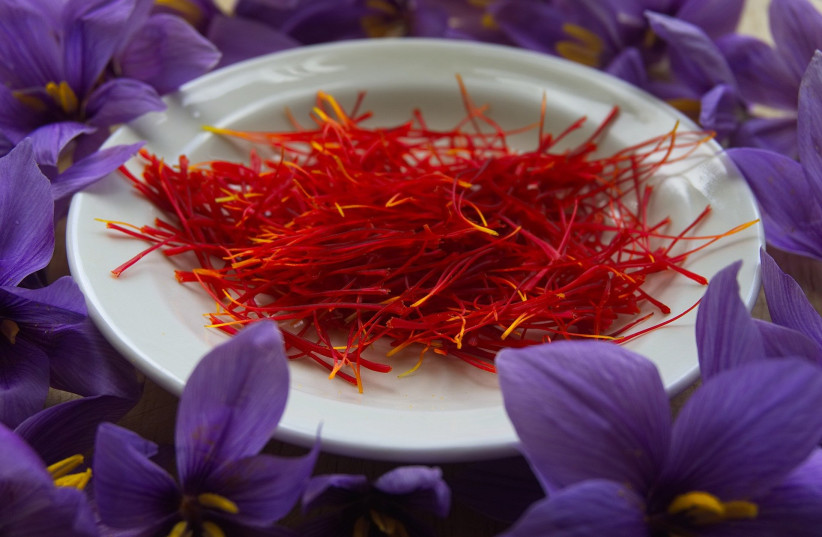(The Jerusalem Post)- Ancient Greek drug could cut COVID-19 deaths — Israeli scientist
Prof. Ami Schattner: “Initial results are promising to say the least.”

When can the drug start being used to help COVID patients?

The saffron plant has been used for medicinal purposes for more than 4000 years to treat as many as 90 different health conditions and ailments.

The active components present in saffron possess many medicinal properties.
The safranal has antimicrobial, antioxidant, anti-inflammatory, and cytotoxic effects, as well as anticonvulsant and antidepressant properties.
The α-crocin has been found to have antioxidant, antidepressant, and anticancer properties.

Saffron is widely used in Indian, Persian, European, Arab, and Turkish foods.

Bioactive Components of Saffron and Their Pharmacological Properties
Azam Bolhassani, in Studies in Natural Products Chemistry, 2018
Abstract
Saffron, the dried stigmas of Crocus sativus flowers, is a well-known spice that has an antidepressant effect.
Chemical analysis of saffron extract has revealed about 150 various compounds among them being crocin, crocetin, safranal, and picrocrocin which are the most important bioactive constituents of saffron.
Major components of saffron extract belong to the category of carotenoids including crocin and crocetin. In the structure–activity studies, pharmacological activities of saffron and its constituents exhibit anti-Alzheimer’s activity (crocin), antitussive activity (safranal), hypolipidemic activity (crocin), anticonvulsant activity (safranal), antipruritic and emollient effects (saffron), antinociceptive and antiinflammatory activity (saffron), antioxidant activity (saffron and crocin), protection from genotoxicity (saffron), cardioprotection (crocetin), antidiabetic activity (crocetin), prevention of respiratory disorders (saffron and safranal), prevention of ischemic retinopathy and age-related macular degeneration (crocin), anti-Parkinson’s activity (saffron and crocetin), hippocampal long-term potentiation/prevention of death of neurons (saffron and crocin), antidepressant activity (saffron), promoting and regulating menstrual periods (saffron), anticancer and antitumor activity (saffron, crocin, and crocetin), antiapoptotic effects on noncancerous cells (crocin), and suppression of hemorrahagic shock (crocetin).
There are various mechanisms describing antitumor effects of saffron and its ingredients such as (a) promotion of cell cycle arrest, (b) inhibition of DNA and RNA synthesis, (c) ability to scavenge free radicals, (d) involvement in the metabolic conversion of carotenoids to retinoids, (e) direct or indirect interactions with topoisomerase II, (f) promotion of interactions mediated via lectins, (g) downmodulation of metalloproteinase and urokinase activity, and (h) expression of the catalytic subunit of the human telomerase in cancer cells.
Based on the current data, saffron and its ingredients exhibited high antioxidant activity and could be considered as a promising candidate for clinical anticancer trials. In this chapter, we will describe recent developments in pharmacological effects of saffron and its bioactive ingredients related to various disorders.
Last Updated on 21.12.2021 by iskova

